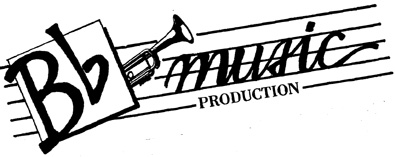
Hello, Charles!
Like you, I tend to like an instrument which "fights back" a little bit. I
believe it makes ppp playing easier, eg., and enables me to "bear down" a
little, esp. in a small club, without blowing everyone out of the room. It
also tends to alleviate that "falling into the mthpc." feeling.
I believe that you can learn to supply considerable resistance by tightening
the m-m-m-m embouchure. Buzz a second line "G" w/o the mouthpiece. Now, note
the tension and airpressure required. This should give a considerable feeling
of "support" which may be what you are seeking.
I remain adamant with my belief that a "larger" mouthpiece tends to promote
the development of "strong" embouchure. HOWEVER - I am no masochist, and
certainly would NOT try to play my Bach 1 during a gig which requires a lot of
high register "fireworks". But, I do my daily practice on that big 'ol,
silverplate-free, grungy, Bach 1. I guess, for me, it's the equivalent of
swinging TWO bats, before stepping up to the plate.
https://www.bflatmusic.com
Keep 'Em Flying!
Clyde
(A):Sorry, but this is PRECISELY the technique I use with my young
trumpeters,to demonstrate that "trumpets do not produce sound -
trumpet players produce sound". When the child buzzes "whatever"
pitch, for eight counts, I push the appropriate valve combination
while carefully inserting the receiver onto the mouthpiece. Works
every time. Trumpets don't produce vibration, mouthpieces don't
produce vibration - buzzing lips produce vibration which is collected
by the mouthpiece, sent on through the trumpet. And the student is
delighted to find out that he is in charge, not an inanimate object.
Heck, isn't this why we chose the trumpet - so we wouldn't have to
rely upon mechanical resonators? Trumpet playing is the next thing to
singing!!
Clyde
(Q) What are your ideas re. buzzing?
I use this technique to help young players (of all ages) understand
that playing the trumpet is NOT like "sounding" a New Years Eve horn,
or any other more "mechanical" instrument; that the mouthpiece
"collects" your buzz and, of course, effects the "sound". But you will
sound like you, and me like me, regardless of the equipment used. If
your buzz is "in-tune" you will play "in-tune". You can become less of
a "slave" to your equipment.
Thanks for listening!
Clyde
Buzz "G" on the second line - no mthpc. and no trpt. Are you able to buzz a good,
clean, tone - free of misc. buzzing and noises? Good. Now, keep moving up in half
steps. later. are you able to buzz a 4th space E, no mthpc.?
How high are you able to buzz?
What do you think you'd need to do, to ascend another half step?
To me, it seems patently simple. When you are no longer able to "hold the buzz in
place" (the embouchure collapses, breaks down), because of the air pressure, you are
NOT going to be able to "buzz" any higher. You will need to further strengthen the
muscles all around your mouth, in order to "buzz" higher.
THIS - is NO PRESSURE in action!!!! LOTS of internal pressure - ZERO mouthpiece
pressure.
ADD THE TRUMPET
OK - now put sown the correct valve combination. Buzz, with your chops only, a pitch
which which MATCHES the valve combination.
EVER SO LIGHTLY - touch the mouthpiece to you buzzing chops. Practice this to the
point where you hear the sound buzzing: BOTH through the tpt. and from around the
mouthpiece. This is important because it demonstrates that YOU, YOUR CHOPS are
responsible for the buzz. NOT THE MOUTHPIECE.
Ask Clyde